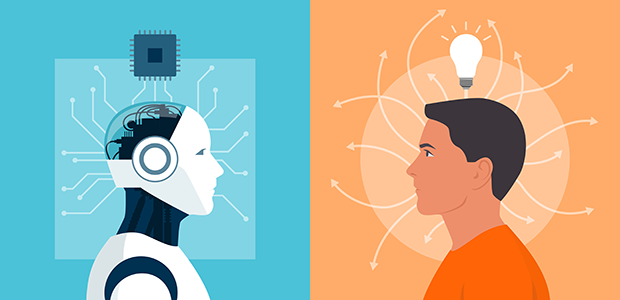
Technology briefing: artificial Intelligence – transforming the world as we know it
This series of Technology Briefings for Startups Magazine will review critical and influential trends, aiming to help business leaders identify opportunities to leverage in their own business development plans. Following the opening feature, on the capabilities and importance of sensors, we will examine how AI is raising both computing performance and efficiency.
It seems that AI is everywhere and in everything: it’s critical for managing complex infrastructures like vehicle charging networks and the green grid; it’s getting things done in business; and it’s the essential ingredient needed to sell high-tech products.
Although we may now be familiar – maybe even bored – with the acronym, the technology is here to stay and is already embedded in many products and services we use daily. Services like email filtering, shopping recommendations, and virtual assistants typified by Alexa and Siri have incorporated AI for some time. They deliver natural experiences that many of us take for granted. Interactive applications, like chatbots, may soon pass the Turing test: that an AI’s imitation skills can consistently convince an evaluator that it is human and not a machine.
Today’s AIs are not the walking, talking, sentient robots predicted ultimately to usurp and replace us. However, their achievements so far, and their ongoing exponential improvement, pose serious questions about the roles of humans, particularly the value of work and therefore access to income.
The scope for disruption is extensive. As well as displacing humans from call centres, jobs such as paralegals, positions involving basic data analysis and reporting, and some healthcare roles like simple image analysis, are expected to be transformed or taken over due to AI’s continuously increasing sophistication and capabilities. On the other hand, it’s not only helping improve business performance but can also increase customer satisfaction through improvements such as shorter telephone wait times.
Outwards from the Cloud
Cloud service providers have been major early adopters of AI, upgrading their infrastructures with AI accelerators; server cards built using processors optimised for neural networks, which are the highly parallelised processing engines that typically host AI workloads.
Introducing these accelerators enables service providers to deliver enhanced applications for activities like vehicle fleet maintenance, enterprise resource planning, and logistics. In other fields such as healthcare, AI can help analyse scans or x-rays to identify anomalies, diagnose diseases, and recommend treatment options in minutes rather than hours or days using conventional practices, driving better patient outcomes. AI is also accelerating the discovery of new drugs by predicting how molecules interact with biological systems, helping researchers identify promising drug candidates more efficiently.
These, and other applications, are often accessed in the form of software-as-a-service (SaaS), which allows pay per use, thus making them affordable to organisations large and small, including startups. Moreover, deployment models are available that allow independent developers to create AI applications and market them to users through Cloud providers, hence easily monetising their skills. In both instances, this points to the democratisation of AI.
More recently, AI has begun spreading into devices that are deployed in the field. The value of this so-called edge AI lies in processing captured data locally for purposes such as contextual analysis, object recognition, and activity detection. Bringing together Cloud and Edge AI, with the Internet of Things (IoT) ecosystem creates the concept of AIoT – Artificial Intelligence of Things – that introduces capabilities such as intelligent analysis and machine learning to multiply the power of traditional IoT applications.
Into the Edge
Selectively processing data inside a smart sensor, instead of sending the full raw data to the Cloud, brings several advantages including lowering latency as well as enabling real-time performance, reduced reliance on Internet connectivity, and less data traffic. Privacy also benefits, by reducing exposure of data on the network.
Edge AI also has the advantage of using much less energy than conventional processing techniques. Neural networks are fantastically efficient at handling simple, repetitive mathematical operations, leveraging parallelism to calculate results quickly. An embedded AI accelerator can outperform a conventional microcontroller core and allows a very low energy budget, which is important for battery powered devices that are often required to maintain operation for their entire lifetime.
Anglia Components is working with semiconductor manufacturers like Analog Devices and STMicroelectronics, who are at the forefront of embedded AI optimised for deployment on resource-constrained chips such as microcontrollers. ST’s ecosystem for development with STM32 MCUs includes the STM32.AI framework and Nano Edge AI tools that facilitate application deployment and sensor integration. Help is also available to connect MCU-based systems directly to well-known IoT platforms in the Cloud.
An example of this is the Analog Devices MAX78000 MCU family which contains a dedicated neural network accelerator that can perform facial recognition more than 99% faster than a comparable conventional MCU core while using less than 1% of the energy. That’s a mind-boggling leap in speed and efficiency that can transform the capabilities of equipment such as intelligent cameras for uses like biometric security, object detection, and people counting.
Another powerful industrial application, which can be deployed with great accuracy and efficiency leveraging Edge AI, is intelligent condition monitoring for electrically driven equipment like machine tools and ventilation systems. Using acoustic and inertial sensors to map the vibration and sounds from a healthy motor, anomaly detection using AI can very quickly detect any significant departure from this signature to warn of potential problems such as bearing wear, imbalance, or misalignment.
A few generations ago, the processing power needed to quickly recognise patterns and anomalies in this way would have taken a roomful of computers. Over time, advancements in computing have reduced that roomful to a single desktop, or even a laptop. Now, with the emergence and evolution of AI, it’s arriving in your wristwatch. But don’t bet on it stopping there.
This article originally appeared in the Sept/Oct issue of Startups Magazine. Click here to subscribe

